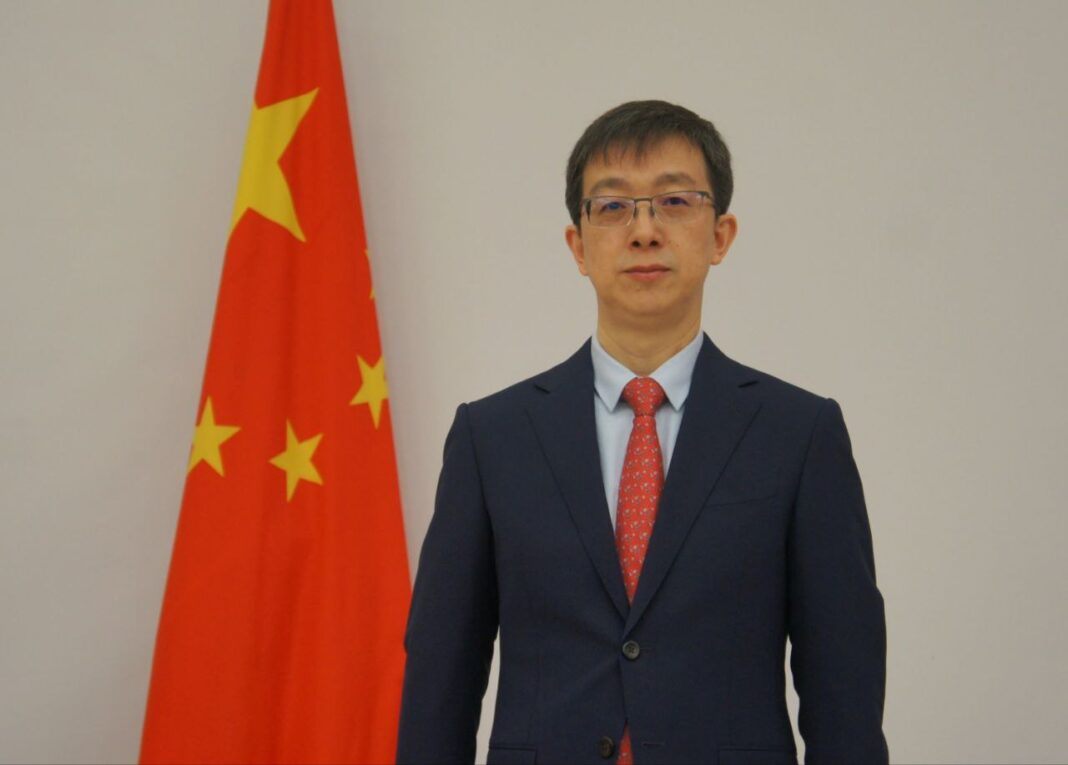In today’s world, economic development faces multiple challenges. The technological, digital, and intelligence divides continue to widen, and structural problems such as the growing gap between developed and developing countries and the marginalization of the least developed countries are becoming increasingly prominent.
Against this backdrop, China is demonstrating its responsibility as a major power through concrete actions. At the recently concluded 2025 World Artificial Intelligence (AI) Conference, China released the Global AI Governance Action Plan, calling for international cooperation and coordinated governance to promote the accessibility and benefits of AI for all. The upcoming 8th China International Import Expo in November this year will establish a dedicated exhibition area for products from least developed countries (LDCs) for the first time, and expand the African Products Exhibition Area, creating convenient channels for products from Global South countries to enter the Chinese market.
However, in disregard of the facts, some Western media hype up the so-called “overcapacity,” “industrial subsidies,” and “export dependence” against China, putting forward the false proposition of “economic rebalancing.” Facts speak louder than words. China’s practice of innovation and opening up is a powerful rebutted to these false accusations.
China’s new energy capacity is advanced capacity that can bridge the world’s “green gap.” The current global new energy capacity falls far short of market demand. The International Energy Agency estimated that global demand for new energy vehicles (NEVs) will reach 45 million units by 2030, over four times the 2022 level, resulting in a demand gap of 27 million units. As the world’s largest NEV producer, consumer and exporter, China is becoming the core pillar filling the gap. In 2024, China produced 12.89 million and sold 12.87 million NEVs respectively, with exports surpassing 2 million for the first time, while over 10 million units served the domestic market. By deeply integrating green technological innovation into the national innovation system, China has made breakthroughs in key technologies such as photovoltaic cell efficiency and NEV manufacturing, significantly reducing costs and laying a solid foundation for the global diffusion of clean energy and green technologies.
The core competitiveness of “Intelligent Manufacturing in China” stems from the innovation strength of Chinese enterprises fostering new quality productive forces. Driven by innovation, China is accelerating the development of new quality productive forces. In the first half of 2025, the value-added output of large-scale high-tech manufacturing increased by 9.5% year-on-year. The production of cutting-edge products such as 3D printing equipments, NEVs, and industrial robots surged by 43.1%, 36.2%, and 35.6% respectively compared with the same period last year. Backed by continuous technological innovation, robust supply chains, and fierce market competition, “Intelligent Manufacturing in China” have gained widespread popularity in global markets, which is the result of the industrious effort of Chinese enterprises. In 2024, China’s total research and development (R&D) expenditure reached 3.6 trillion yuan, ranking second in the world, among which 77% comes from Chinese enterprises investment. China also leads the world in total R&D personnel and science and technology professionals, and it boasts the largest number of top 100 innovation clusters globally, with more than 460,000 high-tech companies. Fundamentally, China’s industrial competitiveness reflects its innovation capability.
China, leveraging its super large-scale market, is creating shared opportunities for the world. With its super large-scale marke, China’s domestic demand is the main engine and anchor of economic growth. Among the hundreds of thousands of Chinese companies that actually exported goods in 2024, nearly 85% also engaged in domestic sales, which accounts for nearly 75% of total sales. The international market is an extension of the domestic market, with the robust domestic circulation providing a solid foundation for the dual circulation development paradigm. On December 1, 2024, China has granted zero-tariff treatment to all LDCs with which it has diplomatic relations, including 33 African nations, on 100% of their products. By March 2025, China’s imports from African LDCs had reached USD 21.42 billion, marking a 15.2 percent year-on-year increase. In June this year, China further announced its readiness to extend the zero-tariff treatment to cover 100% of tariff lines for all 53 African countries that have diplomatic ties with China, and give African LDCs more export access facilitation. China is thus creating more opportunities for Africa and the world through tangible actions.
China’s path of economic innovation is both a journey of self-reliance and determined striving, rooted in its own strengths, and an open road of embracing the world and pursuing win-win cooperation. China’s success stems from market reforms, technological innovation, and high‑level opening‑up. Narratives such as “overcapacity,” “industrial subsidies,” or “export dependency” ignore China’s substantial contributions to the global industrial chain stability and growth, and overlook the real needs of Global South countries for energy, technology, and economic development.
A sick person doesn’t get well by forcing others to take the medicine. Those who use “economic rebalancing” to justify protectionism have nothing to gain and will only destabilize global industrial and supply chains, harm emerging sectors and hinder the world’s climate response and green transition. Practice has fully demonstrated that China’s development is an opportunity for the world. China will continue to unswervingly advance high‑level opening‑up, open the door wider for sharing development opportunities, and bring more stability and certainty to the turbulent world.
Ambassador JIANG Feng is Head of Mission of China to the AU and Representative of China to the UNECA







